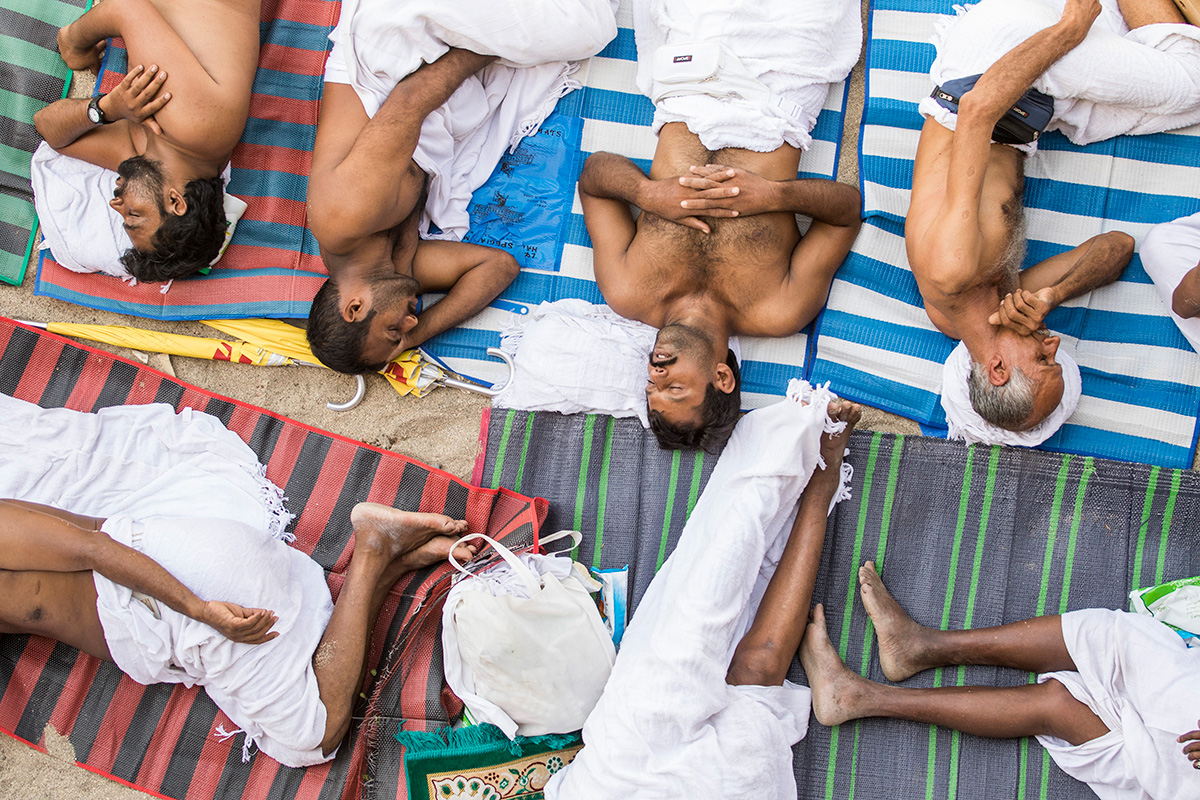Hajj in Saudi Arabia:
Intersection of Tradition and Transition
Jeddah rests squarely at the intersection of tradition and transition. This city, situated on the coast of the Red Sea in western Saudi Arabia, glides with the lulls and swells of everyday life and cautiously wades into a world of rapid modernization. As usual, residents ride public transportation to work, small-business owners open and close their shops, patrons travel through security to enter the city’s massive shopping center, young adults communicate vigorously with each other over Whatsapp and Snapchat, children play games on the playground, and individuals keep up to date with the local weather report. Not surprisingly, it's another sweltering summer day in Jeddah.
Photographer Moe Zoyari, found himself back in Saudi Arabia’s stifling aridity in late summer; however, this time he carried a different journalistic intent. During his first trip ten years prior, he dedicated most of his time to Mecca covering the Hajj, a mandatory pilgrimage that all Muslims are expected to make at least once during their lifetime. This pilgrimage takes place yearly between the 8th and the 13th days of the last month in the Islamic calendar. Zoyari was drawn to Mecca originally to document one of the largest gatherings of human beings on planet earth (over a million people every year), but for this year's journey in 2018, he chose an alternate focus.
“I was more interested to see the lifestyle of the people of Saudia Arabia besides covering the Hajj,” he said. Although he briefly visited Hajj, he immediately rented a car and drove to Jeddah, just 85 kilometers away, to observe the pace of the everyday. “You hear that Saudis are rich, they have five wives or other stereotypes, but I wanted to see that with my own eyes,” said Zoyari.
He found that the wealth, in fact, did not hide itself. At every turn, one can see the strange manifestations of a traditional society suddenly injected with cash. Jeddah is sprinkled with lavish hotels with lobbies covered in gold ornamentation and regal detailing that cater to wealthy residents and business travelers. Though the majority of residents dress similarly, Saudis betray their economic status with high-end sneakers that peek out from beneath modest clothing and expensive smartphones that fragment their faces as they take selfies. The cityscape is punctuated with soaring cranes and construction sites. With each new development site, Jeddah throws itself into the ranks with booming, more westernized Middle Eastern cities like Dubai. Despite this rapid growth, there seems to exist a feeling of unsettlement. To a photographer's eye, it appears that the residents of Jeddah don’t quite know what to do in the wake of this modernization. They build and they buy-- almost without thought-- because that’s what they feel they should be doing.
The collision of the values of history with those of a new technological age have caused this discordance. Though considered a less conservative city than Mecca, Jeddah still hangs tight to conservatism. Even on marketing materials a woman’s face is blurred, and the government still places strong regulations on what internet content is accessible to the general population.Women must don head coverings, whether in form of the hijab or more conservative, niqab. Individuals cannot enter stores alone, without being accompanied by their families.
The value Saudi’s place on privacy and modesty make it challenging for a photographer. "The culture is not yet open to a young, single adult man to walk around with a camera and just take photos whenever he wishes," Zoyari said. Saudi officials appointed a minder to guide and follow Zoyari during his trip, but it made it difficult to get the photos he wanted. He saw a lot more than he could record on camera.
“I wasn’t able to take my cameras with big lenses with me, so all the photos you see here have been captured with a compact mirrorless camera. But when I did take photos, I tried to not invade their privacy, but rather I intended to show a little bit of Saudi I saw,” he said.
What he did manage to capture though proved to be an interesting cultural puzzle: How can the Saudi culture work to keep up with the modernizing world while remaining true to its traditions and ultimately, true to itself?








































































